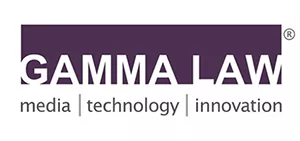- within Technology topic(s)
- in Asia
- within Technology topic(s)
- within Technology, Media, Telecoms, IT, Entertainment and Privacy topic(s)
- in Asia
- with readers working within the Business & Consumer Services, Media & Information and Retail & Leisure industries
The proliferation of AI technologies is driving transformative change across industries, unlocking new commercial possibilities while presenting complex legal challenges. From generative models reshaping creative industries to machine learning tools powering advanced analytics, businesses must manage an evolving regulatory environment marked by intellectual property concerns, data protection obligations, and questions of accountability and governance.
Companies at all stages, from emerging start-ups to global enterprises, must align innovation with legal compliance to mitigate risk and position themselves competitively. Legal counsel with deep experience in technology, media, and intellectual property is critical to building AI strategies that anticipate regulatory trends, support commercial goals, and safeguard long-term business interests.
Legal Risk and Opportunity in Generative AI
Generative AI systems, including ChatGPT, Midjourney, and Stable Diffusion, are at the forefront of digital transformation. These tools generate text, imagery, audio, and code by drawing on vast datasets, which often include publicly available and copyrighted content. While the commercial potential is substantial, the legal implications are far-reaching, particularly in areas involving intellectual property rights, data governance, and liability.
Key legal considerations for businesses leveraging generative AI include:
Ownership and Intellectual Property Rights
Generative AI technologies raise fundamental questions regarding copyright, authorship, and liability:
- Fair Use Doctrine: Content creators argue that the ingestion of copyrighted material by AI systems constitutes unauthorized reproduction. Developers contend that such use is both transformative and necessary for training purposes, potentially falling within the boundaries of fair use under US copyright law.
- Output Ownership: US copyright law does not protect works generated solely by nonhuman authors. However, where human input contributes meaningfully, such as through prompt curation or post-generation editing, there may be a basis for asserting limited rights. Understanding the distinction between AI-generated and AI-assisted content is essential when developing IP protection strategies.
- Derivative Works: Legal exposure may arise where AI-generated content closely replicates the distinctive style or expression of protected works. This is particularly relevant in fields such as visual arts, music, and entertainment, where claims of unauthorized derivative creation may trigger enforcement actions.
Data Privacy and Compliance
AI development and deployment often rely on the processing of vast quantities of personal and proprietary data. Businesses must comply with evolving global data protection frameworks that emphasize transparency, accountability, and data subject rights.
- GDPR and Automated Decision-Making: The EU's General Data Protection Regulation restricts fully automated decisions with significant effects on individuals. Organizations must ensure human oversight, justify profiling practices, and implement mechanisms to uphold individual rights.
- CCPA/CPRA Compliance: In California, businesses must provide disclosures on automated data processing and honor consumer opt-out requests related to profiling and targeted content. These obligations extend to AI-driven services that analyze user behavior or make predictive decisions.
- EU AI Act: Entering into force in phases through 2026, the EU AI Act introduces a risk-based regulatory framework. High-risk AI applications — such as those used in healthcare, finance, and law enforcement — will be subject to strict documentation, transparency, and governance requirements, including predeployment conformity assessments and ongoing monitoring obligations.
Liability and Accountability
The deployment of AI in high-impact environments, from autonomous vehicles to medical diagnostics, introduces complex liability issues:
- Bias and Discrimination: AI systems may perpetuate or exacerbate bias in hiring, lending, or other decision-making contexts. Companies must conduct rigorous audits and adopt mitigation strategies to reduce legal exposure and ensure compliance with anti-discrimination laws.
- Product Liability: Where AI-enabled systems cause harm — through incorrect diagnoses, equipment failure, or vehicle accidents — responsibility may fall on software developers, hardware manufacturers, or deploying entities. Courts and regulators are actively assessing how to apply traditional liability frameworks to autonomous technologies.
- Misinformation and Reputational Harm: The spread of AI-generated misinformation, including deepfakes and synthetic media, can lead to reputational, financial, and legal harm. Entities involved in creating, distributing, or hosting such content may face liability depending on jurisdiction and factual context.
Liability and Accountability
The deployment of AI in high-impact environments, from autonomous vehicles to medical diagnostics, introduces complex liability issues:
- Bias and Discrimination: AI systems may perpetuate or exacerbate bias in hiring, lending, or other decision-making contexts. Companies must conduct rigorous audits and adopt mitigation strategies to reduce legal exposure and ensure compliance with anti-discrimination laws.
- Product Liability: Where AI-enabled systems cause harm — through incorrect diagnoses, equipment failure, or vehicle accidents — responsibility may fall on software developers, hardware manufacturers, or deploying entities. Courts and regulators are actively assessing how to apply traditional liability frameworks to autonomous technologies.
- Misinformation and Reputational Harm: The spread of AI-generated misinformation, including deepfakes and synthetic media, can lead to reputational, financial, and legal harm. Entities involved in creating, distributing, or hosting such content may face liability depending on jurisdiction and factual context.
Global AI Regulation: Jurisdictional Developments
AI policy is evolving rapidly across major markets, reflecting diverse legal traditions, policy priorities, and regulatory philosophies. Understanding these frameworks is essential for global compliance and operational continuity.
- European Union — The AI Act and Risk-Based Regulation: The EU AI Act establishes a comprehensive, risk-based regime governing the development, deployment, and marketing of AI systems. Core provisions ban certain high-risk applications, including social scoring and real-time biometric surveillance in public spaces. Starting August 2025, general-purpose AI (GPAI) models will be regulated, followed by high-risk sectoral applications by 2026. The Act imposes obligations including:
– Risk assessments and conformity evaluations
– Human oversight and accountability mechanisms
– Data quality, transparency, and cybersecurity
requirements
– Mandatory disclosures for chatbot interactions and
AI-generated content, including deepfakes
Any organization placing AI systems on the EU market, deploying them in the EU, or whose systems affect EU residents, must comply — regardless of where the business is located.
- United States — Federal Fragmentation and
State Innovation: The US has not enacted a unified AI
regulatory regime. Instead, federal agencies have issued guidance
and engaged in limited enforcement activity. Recent indications
suggest a pullback from comprehensive federal oversight in favor of
industry-led self-regulation.
States are filling the regulatory gap:
– Illinois: The Artificial Intelligence Video
Interview Act imposes consent and disclosure obligations on
employers using AI to evaluate job applicants.
– California: Legislative proposals continue to
target algorithmic bias and AI-related data privacy concerns.
This fragmented environment creates compliance complexity for businesses operating across multiple states and industries.
- China — Centralized Control and Technical Compliance: China's AI regulatory model emphasizes government oversight, national security, and content control:
– Algorithmic Transparency: Providers must
register algorithmic recommendation systems and disclose their
logic.
– Deep Synthesis Content Rules: AI-generated media
must be labeled and authenticated, with harsh penalties for
misinformation.
– Data Regulation: The PIPL and DSL impose strict
controls over personal data and cross-border transfers, directly
impacting AI model training and deployment.
Compliance requires careful alignment of operational practices, product design, and data infrastructure with China's regulatory mandates.
- Japan: Principles-Based Approach and Global Collaboration: Japan promotes innovation through ethical frameworks and international cooperation rather than prescriptive legislation. Key themes include:
– Responsible and human-centric AI development
– Alignment with global standards through participation in
OECD and G7 initiatives
– Emphasis on cross-border data flows under the "Data
Free Flow with Trust" model
Japan continues to explore IP implications of AI-generated content and the use of copyrighted material in training datasets.
Strategic Outlook: Building a Future-Ready AI Legal Framework
The legal landscape for AI continues to evolve, shaped by new legislation, court decisions, and technological developments. For businesses, legal compliance must extend beyond risk avoidance to become a strategic enabler of innovation and growth.
Key elements of an effective AI legal strategy include:
- Proactive Governance: Implement policies and oversight structures tailored to AI deployment and aligned with jurisdictional mandates.
- Cross-Border Coordination: Harmonize internal compliance practices with the varying requirements of international markets.
- IP and Data Protection: Clearly define ownership of AI-generated content and ensure robust data handling practices in line with privacy laws.
- Dispute Preparedness: Anticipate potential litigation or regulatory investigations and engage experienced counsel to address emerging issues across IP, contract, and liability domains.
Engaging with legal advisors who possess deep technical fluency and cross-jurisdictional experience is critical. Firms with a focus on emerging technologies can provide tailored guidance that supports product development, mitigates risk, and ensures operational resilience in an increasingly complex regulatory environment.
AI Compliance as a Competitive Imperative
AI is reshaping the global business landscape. As regulatory frameworks mature, organizations that take a proactive and informed approach to AI governance will be best positioned to drive innovation responsibly, minimize legal exposure, and build stakeholder trust.
By investing in strategic legal planning, grounded in sound intellectual property, privacy, and regulatory guidance, companies can translate legal compliance from a cost center into a core component of long-term value creation. In a market defined by rapid transformation, adaptability and legal foresight will define the next generation of industry leaders.
The content of this article is intended to provide a general guide to the subject matter. Specialist advice should be sought about your specific circumstances.


